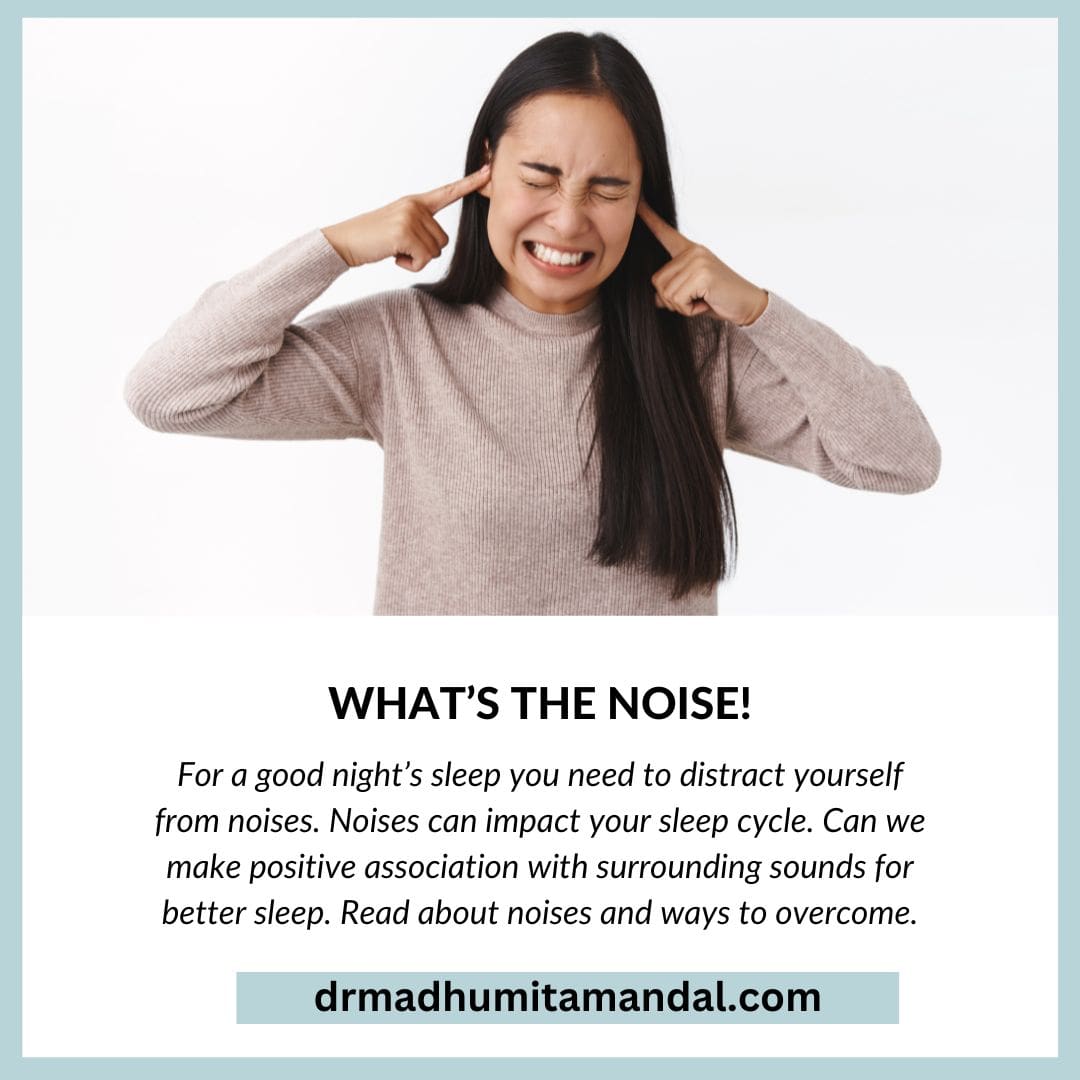Are you aware that background noises are continuously registered by your brain even while you sleep. Sometimes chronic and irregular exposure to disrupting noises can disturb circadian rhythm and make it difficult to sleep. Mind well, sleep and mental health are closely related and noise can disrupt that. Beware! What’s the noise around?
Man, always explored his surroundings and curiously discovered many astonishing things. Noise was one of them. People can even distinguish various noises using colour, in a similar way, like light on a spectrum. You will be amazed to know that noises can be colour coded like white, brown, and pink depending upon its spectrum or sonic hues.
Why knowing about noises is important? Sounds that are trivial during the daytime can become irksome at night. Noises can severely disrupt sleep and sleep cycles. From where does these sleep stealing sounds erupt. Ranging from dull noises of daily activities to howling babies to barking dogs to brassy grinding appliances to honking cars, we have plethora of sounds around. Urban city noises have become the new buzzword. Loud and persistent noises can impact your sleep, wellbeing and mental health in the long run. These persistent sounds can cause your body to release stress hormones leading to increased heart rate, blood pressure and breathing rate all of which can affect health and well-being. Anything above 60 decibels and above for a prolong period is harmful to ears and sleep cycles. (Decibels measure intensity of sound)
Everyday activities contributing to noises-
- Power tools
- Horns
- Sirens and alarms
- Music from smartphones close to ears
- Appliances like mixer grinders, lawnmowers
- Traffic noises trains, metro, planes etc
- Firecrackers
It is important to understand that not only intensity of sound level, but also sound type, duration and personal preferences to noises is equally significant. Persistent loud noises can negatively impact our health and mood.
As I mentioned, like colour, even sounds have their noise spectrum. White and pink are considered to be in the ear friendly zone of the spectrum. Each sound has a unique nature and it impacts our sleep quality. Low pitched and continuous sound like white noise can help mask other jerky sudden sharp sounds like a car honking or an object fall that bet to disrupt our sleep. White noise is a friend in disguise.
WHITE NOISE
There is an equal distribution of all frequencies within white noise. (Range between 20-20000Hz). Some people may refer white noise as broadband or wideband noise because it encompasses multiple bands of sound. If we concentrate and focus on the white noise, it helps masking the background noises.
Examples of white noise include:
- Radio static
- whirring fans or the sound of ventilation systems
- Wind
- Rainfall
- Waterfalls
PINK NOISE
On the contrary, pink noise is like white noise as it is also a broadband noise containing all frequencies between 20 and 20,000 Hz, but it is deeper and more consistent frequency. Examples of consistent, gentle pink noise include:
- heartbeats
- waves hitting the shore
- steady rainfall
- leaves rustling
As ongoing research says, pink noise may also help increase sleep spindle density which are short bursts of activity in the brain that help block out external stimuli while a person sleeps. It helps to calm a sleep deprived child who wakes up prematurely hearing a phone ring or door slamming. Gentle sound, soothing music, mantras and soft whispers always have calming effect on a mind. A calm mind with good night’s sleep is far away from mental health issues.
Note: Any sound can damage your hearing if played too loudly for too long, and that includes pink noise. Keep the volume as low as possible and only use pink noise for the minimum amount of time needed to promote rest and relaxation, to reduce your risk of hearing damage.

